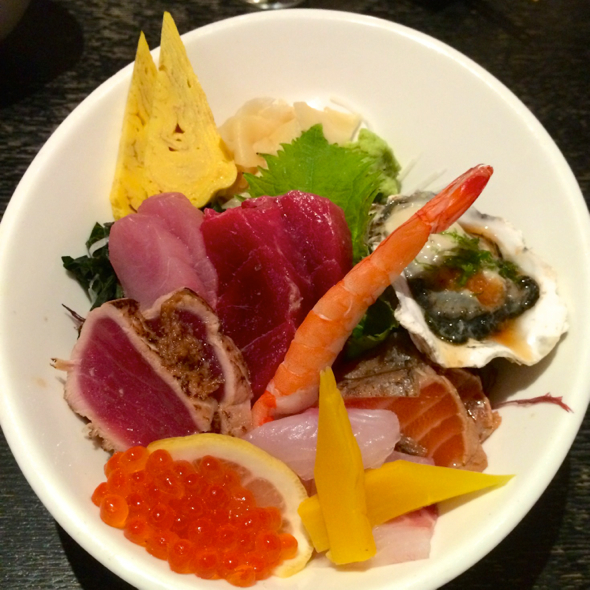Raw Fish and Tradition
By Johanna Barr
The first time I saw sushi, I was 9 years old, and sitting on a cushion on the floor of a Japanese restaurant on 83rd Street and Broadway that is now a Chipotle. I shared shrimp tempura with my mother and she had a yellowtail and scallion roll. I’ve always loved seafood — I devoured my first lobster roll when I was 2, on one of our annual trips to Maine – but back then, I had no interest in trying it raw. The cut up pieces of fish wrapped in rice and black, sticky seaweed looked foreign to me, and I was happy to sit back and let my mom finish it herself.
Three years later, I took the plunge, at a small restaurant in the Seaport called Orange Peel that’s closed down as well. I ordered a yellowtail and scallion roll and loved it. My best friend Jackie ordered eel, and I was horrified by the sight of it and refused to take a bite.
Soon after that my mom and I began going for half-price sushi at Hi-Life, on 83rd and Amsterdam, which, unlike the others, is still open. Hi-Life offers half-price sushi until 7:30 every weeknight and all night on Mondays and Tuesdays. Once a week, we’d decide we wanted sushi, check the time, realize we had about 11 minutes to spare, and sprint the three blocks from our apartment. Every so often we’d get lucky, it’d be Monday or Tuesday, and we wouldn’t have to rush. We’d order yellowtail and scallion rolls, salmon avocado rolls, and tuna and cucumber rolls. Sometimes we’d change it up, pairing the tuna with the avocado and the salmon with the cucumber, but not usually.
When I went to camp in the summer my mom went to Hi-Life alone, or with my dad, or my younger sister, Abby. She’d sit in the glassed-in section just outside the restaurant and write me letters directly on the paper tablecloth. The sushi letters arrived at camp in giant envelopes, stained with soy sauce. I’d hang the long, vertical strips of paper on the wall above my bunk bed.
The sushi wasn’t great at Hi-Life, but going there was our tradition. We eventually started branching out, eating elsewhere and ordering more courageously. My mom turned me on to salmon roe and I introduced her to uni, while our favorite thing to get became tamago, Japanese egg custard that’s served in pale yellow slabs and tastes slightly sweet. We’d always save it for the end of the meal, sometimes eating it in two bites instead of one to make it last longer.
I’ve gone to some of New York’s fanciest sushi bars in the past few years, with Jackie, Abby and my mom. My boyfriend, Joe, took me to Sushi Nakazawa this year for my birthday. Daisuke Nakazawa is a former apprentice of Jiro Ono, the Tokyo sushi chef made famous in the documentary “Jiro Dreams of Sushi.” In it, Nakazawa explains how he struggled for months to learn to make tamago perfectly. When he finally succeeded, he cried.
The tamago was delicious, like everything else, but it costs hundreds of dollars to eat at Nakazawa, and it’s not the type of place where you drop in for a meal. These days, my mom and I meet at Sushi Yasaka, an unobtrusive restaurant tucked away on 72nd Street near West End Avenue, where the fish is fresh and the prices are surprisingly low. It’s always packed, but the hostess knows us by now, and we can usually snag a table for two in a corner without waiting. I moved recently, and I knew I wouldn’t choose an apartment outside Yasaka’s delivery zone. The place I settled on is two blocks away.
When my mom was diagnosed with breast cancer in March 2009, I was at college in upstate New York, three hours away from her and our sushi meals. She didn’t have much of an appetite, thanks to the chemo, which gave her a metallic taste in her mouth and made it hard to eat. But it worked, shrinking her tumor down from a golf-ball sized mass you could feel through her skin to a tiny lump that was removed during surgery that August. It was an out-patient procedure, and when we came to take her home she was groggy from the anesthesia. But as we headed toward the elevator, she began to perk up. We asked her if she was hungry. “A little bit,” she said. “How about sushi?”


Your Comments